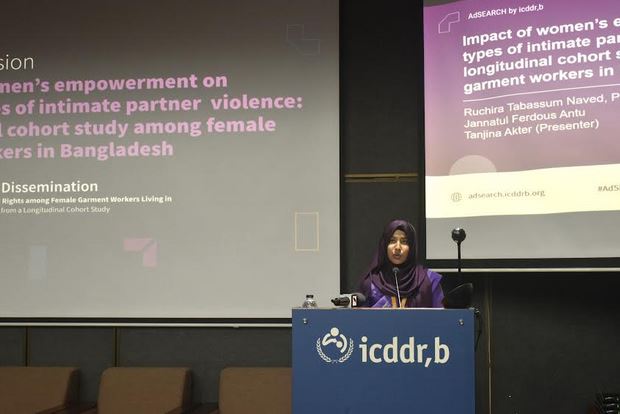News Flash

DHAKA, Sept 29, 2025 (BSS) – A study conducted by icddr,b has revealed that two-thirds of Bangladesh’s women garment workers were married off before turning 18, with nearly 65 percent experiencing their first pregnancy during adolescence.
The research, released today by the International Centre for Diarrhoeal Disease Research, Bangladesh (icddr,b), also found that one in three had faced at least one unintended pregnancy, while one in four reported undergoing an abortion or menstrual regulation.
Spanning 24 months from August 2022 to December 2024, the cohort research is the first of its kind in Bangladesh focusing specifically on the sexual and reproductive health and rights of female garment workers.
The study, conducted under icddr,b’s AdSEARCH initiative with support from Global Affairs Canada, was presented at a seminar at the Sasakawa Auditorium of icddr,b’s Mohakhali campus.
A total of 778 women, aged between 15 and 27 years and residing in Korail and Mirpur slums in Dhaka as well as Tongi in Gazipur, were interviewed every six months under the institution’s Urban Health and Demographic Surveillance framework.
Findings showed both serious challenges and modest improvements. Knowledge of long-term family planning methods increased from 49 percent at the beginning of the study to 70 percent after two years.
Awareness of emergency contraceptive pills rose from 15 percent to 39 percent, while the share of women supporting joint decision-making with husbands in family planning grew from 54 percent to 71 percent.
However, women garment workers continue to face widespread violence in both domestic and workplace settings. In the past year, rates of spousal violence were reported to be high, and non-sexual forms of abuse have risen over the last two years.
In factories, psychological violence increased from 48 percent to 55 percent during the study period. Despite these experiences, very few victims sought formal help—only about 21 percent sought informal support from family or friends, and just one in five reported workplace violence to the authorities.
The study also noted significant gaps in workplace facilities related to reproductive health. Only 22 percent of factories surveyed provided sanitary pads, while just 14 percent supplied contraceptives.
According to the researchers, education and early interventions play a crucial role in reducing teenage pregnancies. Women with at least nine years of schooling and those who married later faced lower risks of adolescent pregnancy.
The likelihood of teenage pregnancy was 47 percent lower among women who used contraceptives before their first pregnancy, while those who began working in the garment sector before conceiving were also less likely to experience adolescent pregnancies. In contrast, women who reported spousal violence faced a 26 percent higher risk.
Speaking at the seminar, Dr. Ruchira Tabassum Naved, Emeritus Scientist at icddr,b and the study’s principal investigator, said: “Although Bangladesh’s garment industry is thriving economically, the sexual and reproductive health of women workers is poorer compared to other groups of women. Addressing these issues requires more research and joint initiatives by government, development agencies, and stakeholders.”
Former director of Population Council Bangladesh Dr. Ubaidur Rob, Bangladesh Knitwear Manufacturers and Exporters Association (BKMEA) Joint Secretary Farzana Sharmin, and former Marie Stopes Bangladesh Executive Director Yasmin H. Ahmed also addressed on the occasion.
The speakers highlighted the need for greater awareness, better access to contraceptives, workplace counseling services, and revised schedules at public clinics to support working women.
They noted that entrenched patriarchal norms continue to undermine women’s ability to balance family life and work, often leaving them without a voice in reproductive decisions.
The discussants stressed that ensuring access to reproductive health services inside factories and addressing workplace violence are critical steps to protect the rights and well-being of women garment workers.